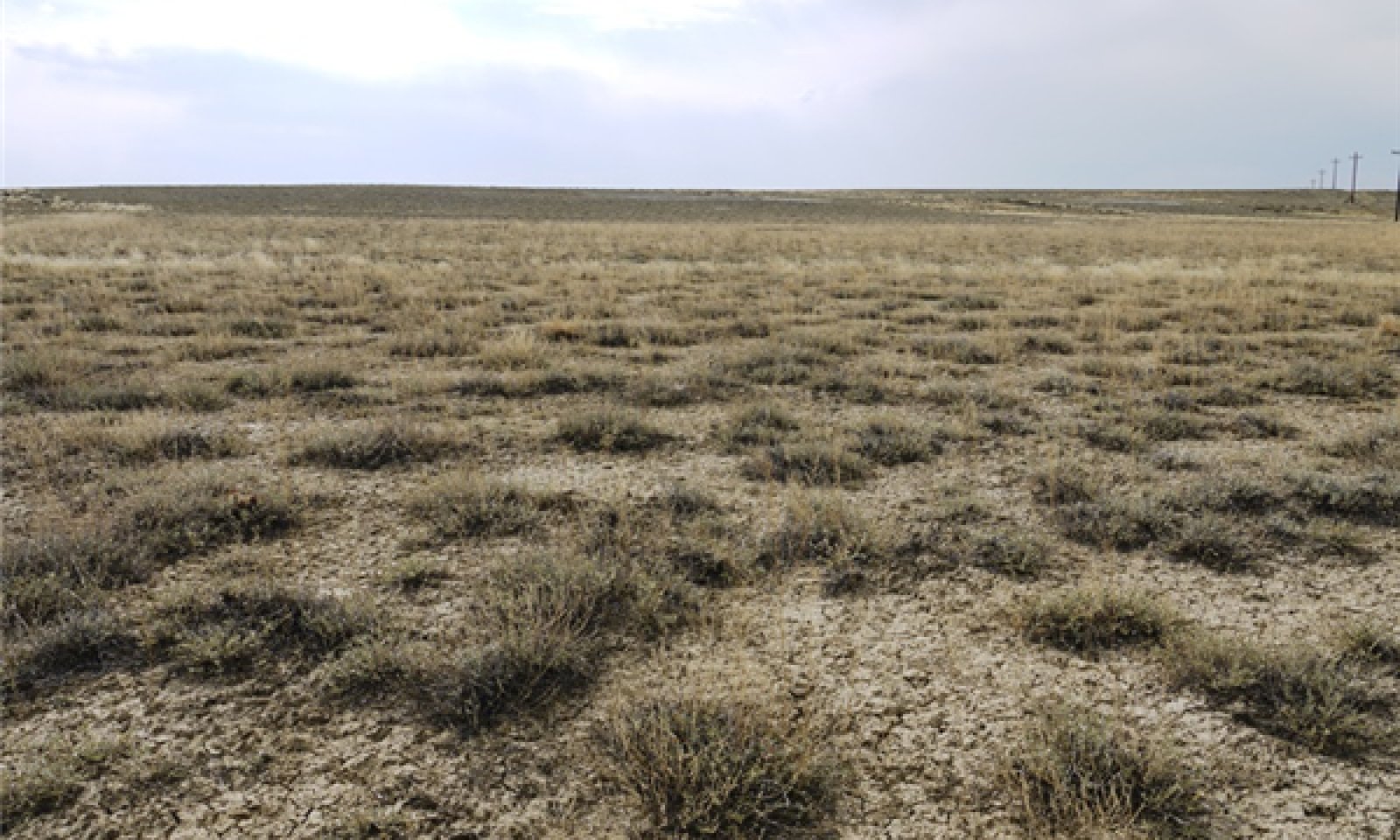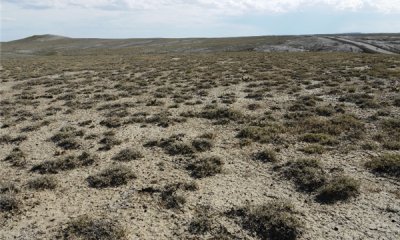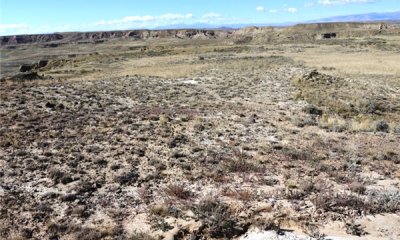
Saline Upland Clayey (SUC) Big Horn Basin Core
Scenario model
Current ecosystem state
Select a state
Management practices/drivers
Select a transition or restoration pathway
- Transition T1A More details
- Transition T1B More details
- Restoration pathway R2A More details
- Transition T2A More details
- Transition T2B More details
- Restoration pathway R2A More details
- Restoration pathway T3A More details
- Transition T4A More details
-
No transition or restoration pathway between the selected states has been described
Target ecosystem state
Select a state
State 1
Saltgrass / Native Grasses



Description
The interpretive plant communities or Reference Communities (1.1 and 1.2) for this State have developed under moderate use throughout the year by large ungulates. Although these sites do not provide a large quantity of forage, the value of the saltbush and the interspersed grasses provides a food source for spring and fall grazing when other sites are sensitive. This State is fragile, but is well adapted to the climatic conditions of the Northern Intermountain Desertic Basins, and can respond and recover quickly to drought, is sustainable, but hard to re-establish once disturbed.
Submodel
Description
The loss of perennial grass species leaves an at-risk community that is vulnerable to invasive species, but is resilient and resistant to change. The resistance to change and low productivity of the land, diminish the ability and desire to improve or “manage” these landscapes. If managed properly, saltbush can be a great spring or fall food source for livestock and wildlife, with high sustainable protein availability throughout the year. The low stature (lack of structure) within this community limit snow catch and cover.
Submodel
Description
The major invasive species that are moving into the Big Horn Basin are: Cheatgrass, Halogeton, Russian Knapweed, Whitetop, and a variety of thistles. Cheatgrass and Halogeton are the major threats found to occur within the Basin. The potential risk of becoming a monoculture of Cheatgrass has been minimal, with Halogeton being the more dominant and adapted species on these sites. Many areas of saline soils are used frequently by recreationalists for 4-wheeling, shooting, etc due to the open barren nature. With the increased “traffic” and corresponding increase in soil disturbance provides for a more prevalent and abundant seed source as well as improved seedling establishment created by the loosening of the soil surface.
Submodel
Description
Climatic conditions and soil limitations restrict the feasibility of manipulating the native vegetation or degraded sites with much success. Additional inputs to help improve soil quality as well as artificial watering systems to assist in seedling establishment have been costly, and troublesome. Irrigating/watering these sites has created issues with surface crusting, inhibiting seedling emergence. Intensity and timing of natural precipitation has proved risky and nearly impossible to achieve a high level of success. However, areas have had acceptable establishment with introduced or improved plant varieties. Large landscapes of this ecological concept have been identified surrounding or intermixed with active bentonite mines, oil/gas developments, or have been used for recreational vehicles. The level and extent of disturbance varies greatly between uses. These are all factors considered in the following Community descriptions.
Submodel
Mechanism
Frequent, Severe Grazing and Drought – When these communities are used year-long with no recovery and multiple uses per the growing season, the mid-stature cool season grasses will be removed or reduced to a very trace composition on the site. If this is again exacerbated with prolonged drought, the community will become a saltbush dominant or monoculture stand.
Mechanism
Drought, Disturbance or Over-use with Seed Source present - When drought or a disturbance such as over-use by grazers occurs the vulnerability of the state is opened and when there is a seed source present, invasive species can gain a foot hold quickly due to the open canopy and low plant density.
Mechanism
Long-term Prescribed Grazing - seeding with no to only minimal ground disturbance, cultural seeding practices – With extended grazing management, allowing rest and rotation, these sites may be prevented from further degradation, and will see a return to a reference state composition over very extended periods. Trials have been completed on an informal basis of broadcast seeding sites in the fall/winter, and then feeding hay over seeded area. Hoof action will incorporate organic material into the soil, increasing infiltration, improving nutrient availability and assisting to slow or prevent erosion, allowing an increased chance of seedling establishment. Although the scientific studies have not addressed this in the Basin, it has been seen to have a small success in isolated areas.
Relevant conservation practices
| Practice | External resources |
|---|---|
|
Range Planting |
|
|
Upland Wildlife Habitat Management |
|
|
Prescribed Grazing |
Mechanism
Disturbance with Seed Source present, Drought – Ground disturbance from recreation, energy development or other activities provides a means to introduce a seed source into an already vulnerable community with the high bare ground and open canopy. Drought provides further stress on the saltbush, reducing vigor, and allowing species such as Halogeton and Cheatgrass to gain a foothold in the community.
Mechanism
Mechanical Grazing Land Treatment (Furrowing/Pitting), Seeding – Several locations throughout the Big Horn Basin have been contour furrowed with a range plow with a 5 foot interval. In some areas non-native seedings were implemented while others had no seedings completed. The furrows assisted in catching and holding more moisture and provided a zone where establishment could take place. Overall improvements were seen to persist on these treated locations for over 20 years. However the process is quite expensive with low returns (long-term species response).
Mechanism
Integrated Pest Management, Invasive Weed Control, Long-term Prescribed Grazing - As was mentioned above, it is known that with favorable weather and management, Gardner’s saltbush will respond and gain productivity, if a presence is there before treatments begin. The process is very slow and will require continual maintenance of the site to prevent Halogeton from returning.
Relevant conservation practices
| Practice | External resources |
|---|---|
|
Integrated Pest Management (IPM) |
|
|
Upland Wildlife Habitat Management |
|
|
Prescribed Grazing |
|
|
Invasive Plant Species Control |
Mechanism
Integrated Pest Management/Invasive Species Control, Grazing Land Mechanical Treatment, Seeding – With the improved varieties of plant materials that are available for salt-affected soils, seeding sites has become a more feasible solution. However, control of the invasive species with long-term grazing management as well as mechanical preparation and seeding will be required to have any level of success. Success will still be minimal due to the limiting climatic conditions that exist within the Big Horn Basin.
Relevant conservation practices
| Practice | External resources |
|---|---|
|
Critical Area Planting |
|
|
Grazing Land Mechanical Treatment |
|
|
Range Planting |
|
|
Heavy Use Area Protection |
|
|
Integrated Pest Management (IPM) |
|
|
Upland Wildlife Habitat Management |
|
|
Early Successional Habitat Development/Management |
|
|
Native Plant Community Restoration and Management |
|
|
Prescribed Grazing |
|
|
Invasive Plant Species Control |
Mechanism
Continued Disturbance or Lack of Use/Management with Seed Source present - Repeated misuse or abused by recreational traffic is common on the raw or "disturbed" appearance of reclaimed or manipulated areas. These at-risk locations are vulnerable to weed encroachment, especially by aggressive invasive species that are persistent within the Big Horn Basin. Knapweed and Halogeton, as well as Cheatgrass has seed sources readily available and easily transported on tires, undercarriages, animals, and humans. With continued presence of activity or movement through disturbed or establishing communities, the risk of transitioning to an invaded state increases.
Model keys
Briefcase
Add ecological sites and Major Land Resource Areas to your briefcase by clicking on the briefcase (![]() ) icon wherever it occurs. Drag and drop items to reorder. Cookies are used to store briefcase items between browsing sessions. Because of this, the number of items that can be added to your briefcase is limited, and briefcase items added on one device and browser cannot be accessed from another device or browser. Users who do not wish to place cookies on their devices should not use the briefcase tool. Briefcase cookies serve no other purpose than described here and are deleted whenever browsing history is cleared.
) icon wherever it occurs. Drag and drop items to reorder. Cookies are used to store briefcase items between browsing sessions. Because of this, the number of items that can be added to your briefcase is limited, and briefcase items added on one device and browser cannot be accessed from another device or browser. Users who do not wish to place cookies on their devices should not use the briefcase tool. Briefcase cookies serve no other purpose than described here and are deleted whenever browsing history is cleared.
Ecological sites
Major Land Resource Areas
The Ecosystem Dynamics Interpretive Tool is an information system framework developed by the USDA-ARS Jornada Experimental Range, USDA Natural Resources Conservation Service, and New Mexico State University.




